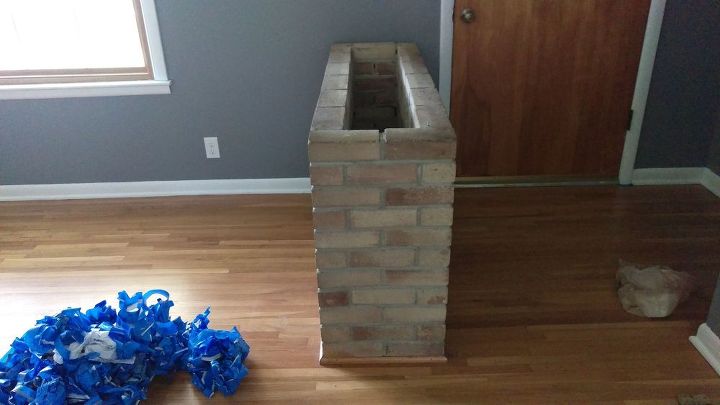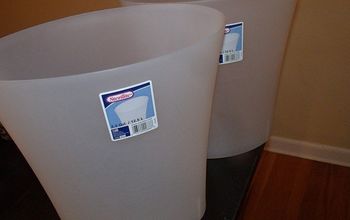Which mix compound should I use in a ADOBE wall for plaster or stucco?

Related Discussions
GNATS - How to get rid of them?
Somehow my house and garden got tiny gnats that killed my fuchsia plant and fly everywhere. I have tried ALL the Web recommendations - soap and oil dishes, sand in th... See more
Marigolds growing! Should I pinch the buds?
My marigold plants are growing. I heard that pinching the buds until Autumn will allow them to grow without killing the plant. Is this true?
Growing garlic
Growing our first garlic, should we wait until the leaves are drying out before we pick it? Husband picked first one today along with our first potatoes.
How to keep mice out of your garden?
Hi everyone, I have mice in my garden destroying my vegetables and I have also noticed them in the barn and shed. Please can someone tell me how to prevent them from ... See more
What's the best flower/plant to grow in Texas?
I know that opinions vary, but what's your opinion?!I have great luck w Rosemary plants. Green all year long.
How can I avoid spending a fortune on potting soil?
Due to back problems, I have switched to container gardening. Not only are big pots expensive, but so is the soil! I have been told I should switch out the soil each ... See more
Ugly planter
No clue what to do with this ugly permanent planter. I want to demolish it but it looks cemented to the floor and a floor redo isn't in the budget. Ideas, suggestio... See more





There is rammed earth, which is dry soil mixed with 2-5%cement for the lime, but pure mud adobe can be strengthened by adding dry chopped straw to the mix. If you search rammed earth blocks you'll find articles like this one https://www.motherearthnews.com/diy/make-pressed-earth-blocks-zmaz78jazbur
yeah you don't want linseed oil in your earth or near edible plants for sure! I like your other ideas for additions, very resourceful!
here's bit of an article on adobe coatings, most of them need to be renewed periodically if you want to go the totally organic way. there are also recipes for manure/mud coatings which have to be pressed on rather hard while the brick is still moist. It can be almost polished and dries very hard. You have to use cured/aged manure from 100% vegetarian animals, like horse, cow, etc. Human manure, while free and plentiful, ahem! cannot be used even if the person is a vegetarian because of the enzymes still present in the gut. Bonus of using cow manure is that it has plenty of grass fragments in it already. Cured manure should smell like hay in the sun or freshly cut grass, no poo smell left, no acrid smell..
(article)
Traditional Surface Coatings need frequent maintenance. To protect the exterior and interior surfaces of new adobe walls, surface coatings such as mud plaster, lime plaster, whitewash, and stucco have been used. Such coatings applied to the exterior of adobe construction have retarded surface deterioration by offering a renewable surface to the adobe wall. In the past, these methods have been inexpensive and readily available to the adobe owner as a solution to periodic maintenance and visual improvement. However, recent increases in labor costs and changes in cultural and socioeconomic values have caused many adobe building owners to seek more lasting materials as alternatives to these traditional and once inexpensive surface coatings.
Traditionally, adobe surface coatings that protected the fragile adobe building fabric were renewed every few years. Women are seen here recoating an adobe wall with mud plaster mixed with straw at Chamisal, New Mexico. Photo: Russell Lee, Farm Security Administration Collection, Library of Congress.
Mud Plaster
Mud plaster has long been used as a surface coating. Like adobe, mud plaster is composed of clay, sand, water, and straw or grass, and therefore exhibits sympathetic properties to those of the original adobe. The mud plaster bonds to the adobe because the two are made of the same materials. Although applying mud plaster requires little skill, it is a time-consuming and laborious process. Once in place, the mud plaster must be smoothed. This is done by hand; sometimes deerskins, sheepskins, and small, slightly rounded stones are used to smooth the plaster to create a "polished" surface. In some areas, pink or ochre pigments are mixed into the final layer and "polished."
Whitewash
Whitewash has been used on earthen buildings since before recorded history. Consisting of ground gypsum rock, water, and clay, whitewash acts as a sealer, which can be either brushed on the adobe wall or applied with large pieces of coarse fabric such as burlap.
Initially, whitewash was considered inexpensive and easy to apply. But its impermanence and the cost of annually renewing it has made it less popular as a surface coating in recent years.
Lime Plaster
Lime plaster, widely used in the 19th century as both an exterior and interior coating, is much harder than mud plaster. It is, however, less flexible and cracks easily. It consists of lime, sand, and water and is applied in heavy coats with trowels or brushes. To make the lime plaster adhere to adobe, walls are often scored diagonally with hatchets, making grooves about 1-1/2 inches deep. The grooves are filled with a mixture of lime mortar and small chips of stone or broken roof tiles. The wall is then covered heavily with the lime plaster.
Cement Stucco
In the United States, cement stucco came into use as an adobe surface coating in the early 20th century for the revival styles of Southwest adobe architecture. Cement stucco consists of cement, sand, and water and it is applied with a trowel in from 1 to 3 coats over a wire mesh nailed to the adobe surface. This material has been very popular because it requires little maintenance when applied over fired or stabilized adobe brick, and because it can be easily painted.
It should be noted however, that the cement stucco does not create a bond with unfired or unstabilized adobe; it relies on the wire mesh and nails to hold it in place. Since nails cannot bond with the adobe, a firm surface cannot be guaranteed. Even when very long nails are used, moisture within the adobe may cause the nails and the wire to rust, thus, losing contact with the adobe.
Other Traditional Surface Coatings
These have included items such as paints (oil base, resin, or emulsion), portland cement washes, coatings of plant extracts, animal manure and even coatings of fresh animal blood (mainly for adobe floors). Some of these coatings are inexpensive and easy to apply, provide temporary surface protection, and are still available to the adobe owner.
Adobe Deterioration
When preservation or rehabilitation is contemplated for a historic adobe building, it is generally because the walls or roof of the building have deteriorated in some fashion—walls may be cracked, eroded, pitted, bulging, or the roof may be sagging. In planning the stabilization and repair of an adobe building, it is necessary:
To develop a maintenance program once the rehabilitation or restoration is completed.
Thank you for the hints and ideas... I guess my best choice would be the cured manure which is not too expensive and commercially available most of the time (I live in Las Vegas where is not too easy to find farms, old ways or country folks) ; i'll also asume will need to leave it to sun dry to lose the ammonia smell and guess still may be beneficial for the plants. also since leave the bricks to dry before ensemble the planter boxes and then moist to bond, could do the same applying the external coat ... Some old things to learn and rescue (lol).
Thank you very much